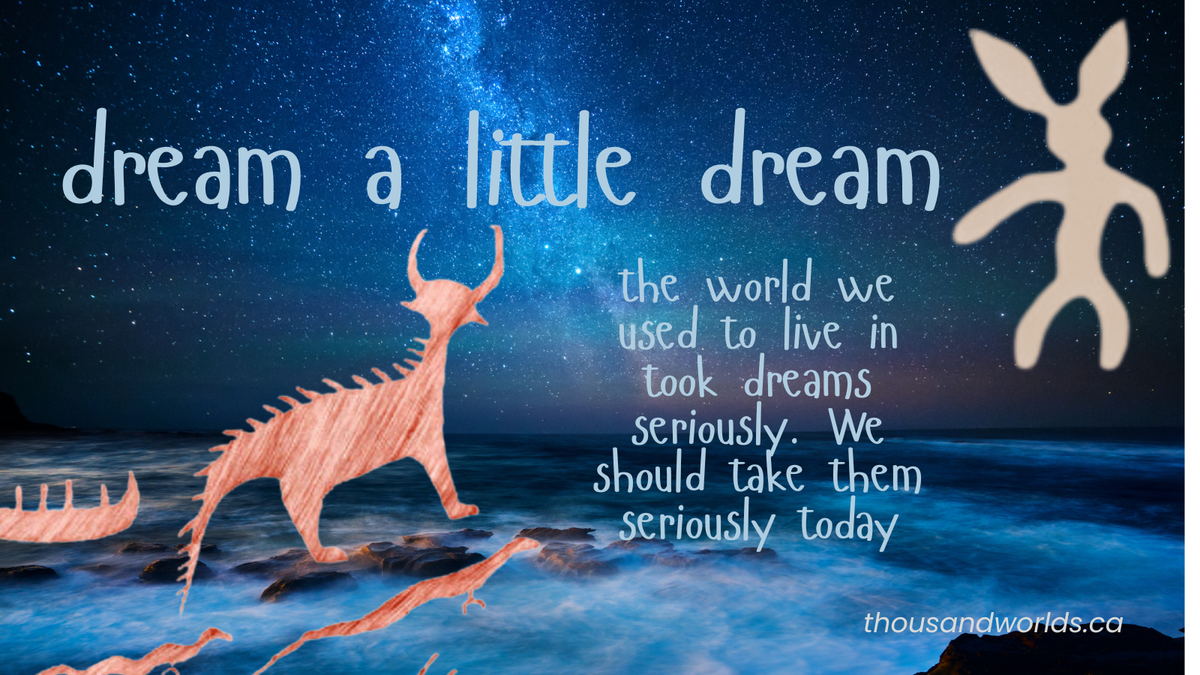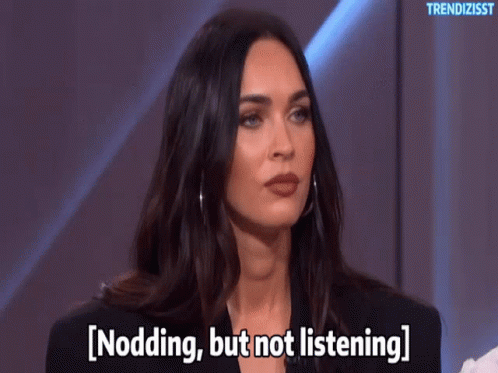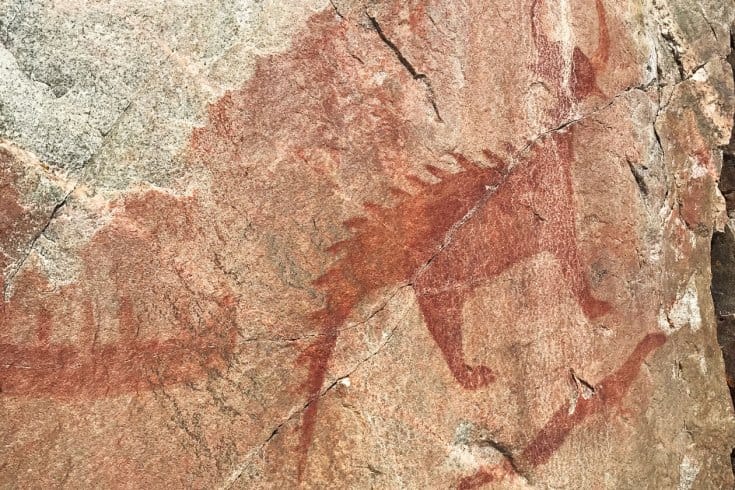Dream a little dream

Nanaboozho and the death of his brother

I am working my way through Ojibwa Texts by William Jones with some additional insights from The Trail of Nenaboozhoo and Other Creation Stories as well as Serpents and Other Spiritual Beings which are stories collected and told by Isaac Murdoch (Serpent River First Nation), and Gii-Nitaa-Aadisooke: Ojibwe Legends from Lac Seul collected and told by Patricia Ningewance (Lac Seul FN). Other sources are linked as they come up or included in another section about what I'm reading.
By the way, these essays are not meant to be authoritative interpretations, just personal reflections.
https://calendar.uoregon.edu/event/clark-lecture-patty-krawec

Today's story is part of the Anishinaabe flood narrative, and it features in all three of our main texts. In Jones' documentation it takes place across two stories: the death of Nanabushu's nephew and Nanabushu slays the toad-woman. Isaac Murdoch tells it in Nenanboozho and the Serpents, and in the Ningewance collection it is simply called Wiisakejaak (Nenaboozho). We're going to talk more about the flood itself next time, because the part that interests me today is the dream that Nanaboozho has, even though it's really a very small part of the story.
Last week Nanaboozho ran with the wolves. TL:dr? Nanaboozho hangs out with some wolves for a while, they teach him how to make fire, get annoyed with him, and when they part ways one of the younger wolves goes with Nanaboozho .. although in Ningewance's telling it is the death of this young wolf that prompts Nanaboozho to head off by himself to avenge his death. I'm not getting too hung up on whether it's Nanaboozho's younger brother or nephew and you shouldn't either. These designations describe social as well as blood relation, and it isn't that weird. We've all got aunts, uncles, cousins, etc. who aren't actually related to us through anything other than friendship and proximity. The only part that's weird is the western insistence on clarifying that these aren't "real" relatives. It's actually a pretty good way to structure a society because it creates layers of reciprocal relationship and safety that stretch far beyond the nuclear family. It's also one of the things that the US government hated/hates about our communities because at a fundamental level these broad kinship networks pose a threat to the state.
One night Nanaboozho has a terrible dream in which the younger wolf dies and upon waking he tells the younger wolf about it, warning him that these powerful water-dwelling manitouwag are jealous of Nanaboozho's own powers and his nephew should not cross the frozen lake (Ningewance) at all or cross a stream without throwing a stick into the dried river-beds before jumping over them (Murdoch and Jones). Either way, Nanaboozho has a bad dream that he takes very seriously. The younger wolf, however, does not take it seriously.

I mean, at first he does. He stays off the frozen lake, he remembers to throw the stick but as with all warnings eventually the nothing that happens takes on a kind of meaning itself. He comes to believe that nothing will continue to happen and one day his hurry to catch the moose that he is hunting results in tragedy. Before long the serpents, or water panthers, have a wolf hide to cover their door.
Nanaboozho is grief-stricken and enraged. You'll remember from last week that he had promised the old wolf no harm would come to this young one. He sets off to find the manitouwag who killed his nephew and, with the help of a kingfisher who saw the whole thing, learns how to kill them. In order to get close enough to these manitous to kill them, he shape-shifts into a birch tree but he is not successful. The attempt, which leaves an arrow lodged in the water panther's body, does unleash a flood but it recedes quickly allowing Nanaboozho to regroup.
The Ojibwe, as Murdoch points out in his telling of the story, believe that we exist in three parts: body, spirit, and shadow. And in order to kill the chief of these manitouwag, Nanaboozho needs to shoot the arrow into the chief's shadow.
He confronts a toad-woman who, in at least one of these versions, was working for the water panthers to kill Nanaboozho. He kills her instead and wears her skin in order to get close enough to try again. This time he is successful, and the death of the water panther unleashes torrents of water. These waters do not recede quickly, and next time we'll be talking about the flood and the world that came next.
Now, these water panthers are powerful manitous and the great lynx, their leader, is Mishepishu, as the blog Mii Dash Geget describes. He is not the same as the giant horned serpent, Mishiginebig who also lives beneath the waters, but in many stories they are combined, as in Ningewance's, and over time Mishepishu has come to represent aspects of both. They are not bad, there is very little in the Ojibwe cosmology that would be divided into good or bad, the manitous simply are and it behooves us to take them seriously. This is what the younger wolf failed to do and what Nanaboozho's dream was warning him about.

Dreams.
We should take them seriously. And I don't mean like "I have a dream" or needing somebody to execute my vision, although both of these are very valid things worth being serious about. I mean the dreams we have at night or the visions that come in ceremony. I mean communications from beings beyond ourselves with messages that we should take seriously.
The Protestant world divides that kind of knowing into good and evil; you're either a witch or a mystic depending on which side of the church pew you are on. Marion Gibson, in her historic overview Witchcraft: A History in Thirteen Trials, writes about a shift in thinking as the Protestant Reformation took hold. It was no longer enough to belong to the church in order to be Christian, there was no longer a single church to belong to and so having correct belief, rather than being part of a particular community, became the defining feature of what it meant to be Christian. And in a world of splintering denominations and fracticious arguments over whose beliefs were the most correct and therefore represented the True Church, being able to prove that your spiritual power came from God became increasingly important. Gibson notes that many of those accused and put to death were Christians, just the wrong kind which meant to the authorities that they weren't Christian at all and whatever spirituality they did have was therefore connected to Satan. Anyone who couldn't prove that their spiritual connections, visions, what have you, came from God was put to death just like the Bible said they should be.
These judgements are actually pretty wild because back in the late 70's and early 80's, at the height of the Satanic Panic, I remember youth group leaders telling me that the devil believed in God, knew that Jesus was his son, quoted Scripture, etc etc etc. There was literally nothing I could say to prove my belief that wouldn't also be true of the devil. It all came down to how they interpreted my actions, although even there obviously the devil knows how to do good things too. I lost track of how many times I "got saved" because the last one (or ten) clearly hadn't taken hold.
Those ideas came with the colonists to the new world where they were confronted by native people with access to all manner of spiritual powers just as a matter of course. From a young age, children and young people were put out to fast in order to develop their spiritual connections because when you live in a deeply interconnected world surrounded by manitouwag you need to take them seriously. That's downright sensible when you think about it in terms of quantum physics and energy. Why couldn't some people work with quantum energies the way that others work with clay? But to the early colonists, who didn't seem to take Jesus seriously at all when he told them that the kingdom of God was already here and thought they had to impose it through fire and legislation, all this was taking place outside of their particular church and was therefore demonic. It's worth noting that in Christian theology demons are beyond redemption, so it follows that demonizing people puts them outside of redemption as well, makes it easier to lock them up, deport them, and otherwise deny them the necessities of life.
There were many failures on the part of the colonists, but that failure alone cost us our women and children, our men and our communities. Our religous practices were made illegal. It cost us everything. The jealous manitous that came here with European Christianity took our most precious relations and used their skins to cover Christian doorways just as the US and Canada would do to those whose political beliefs were demonized.

In The World We Used to Live In: Remembering the Powers of the Medicine Men, Vine Deloria Jr. collected stories from across Canada and the US of the ways in which spiritually powerful men and women could draw on the powers around them to accomplish things that their communities needed. Much of this has to do with healing, but it can also mean travel, knowing things, locating things, and more. He writes, the people "understood that their task was to fit into the physical world in the most constructive manner and to establish relationships with the higher power, or powers, that created and sustained the universe. They sought to learn a way of living that would most efficiently accomplish these tasks." And later "From generations of experience, then, people learned to have confidence in the content of dreams and followed their instructions faithfully."
Dreams were understood across Indian societies to be a communication, something that would help them in material ways (like avoiding being killed by jealous manitous) as well as more spiritual, they held fast to their connection and relationship with the creative powers that create and sustain the universe. We are, in a very real sense, co-creators with the universe .. putting flesh on the stuff of imagination.
Because isn't that the core of creation stories? God, creator, the great mystery, has an idea and that over the course of creation that idea takes physical shape. It exists in relationship with other ideas that have taken physical shape, they become real in a material sense and the interactions between them create new ideas that also become clothed in flesh. Each of these beings finding the place that is most suited to them, and then developing their potential, an idea that we will come back to next time as Nanaboozho re-creates the world. The universe as we know it comes to exist from an infinite sea of possiblity that we are part of, connected to. In that context, dreams are not mysterious at all. They are a bridge, a conduit to the creative energy that flows all around us. Deloria, along with Anishinaabe author Lawrence Gross, talk often about the quantum nature of our beliefs.
Now we all have ridiculous dreams, so I don't mean to say that every dream is spiritual communication ... or maybe it is. I mean, not every conversation I have with friends is deadly serious but every conversation or meme shared deepens our connection so that we can have those important conversations.
Nanaboozho knew, just as medicine people know, that dreams are to be taken seriously and when he awoke in tears he warned his nephew. For a time, his nephew listened. We often do, in the moment of crisis we listen and change our behaviour. But after a while the nothing that happens takes on its own meaning, and we think that nothing will continue to happen so we go back to old habits. We stop wearing masks even though the virus still circulates and poses a risk to those with compromised immune or respiratory systems. We scroll past the latest news from Gaza. Like frogs in a pot of water we get used to whatever new normal presents itself because we've fixed our eyes on the nothing instead of our kin.

The World We Used to Live In: Remembering the Powers of the Medicine Men by Vine Deloria Jr. This book was published posthumously and is a collection of first hand accounts of the extraordinary things medicine people in tribes across Canada and the US accomplished, things that were perfectly normal to the people involved but extraordinary to those who were not used to a world like this. It's particularly interesting to me because Deloria and I seem to have taken the same trajectory from "least mystical Indian ever" to recognizing that devaluing our spiritual world means devaluing everything we say we stand for.
Witchcraft: A History in Thirteen Trials by Marion Gibson. My friend Robyn recommended this to me and I bought it, fittingly, at the HP Lovecraft bookstore in Providence, Rhode Island. She takes a historian's lens to witch trials spanning hundreds of years from England and Salem to Norway and Africa and then back to the US, looking at how changes in Christian theology and the political needs it served operated to demonize, control, and execute women.
Wild Faith: How the Christian Right is Taking Over America by Talia Lavin. If you experienced the Satanic Panic of the late 70s and early 80s along with the proliferation of rapture theology that came with it you'll find this book fascinating. She makes a very strong argument that the theology of those years laid the groundwork for our current world, with ideas about urgency and the need to impose the kingdom of God (ie. make the US a Christian Nation) moving from churches and into the political sphere. All of which which is reflective of the early colonial period. Once again we're in a world where demons and devils are all around us (thanks Rosemary's Baby!) and if you are accessing spiritual power outside of an accepted church you can be accused of posing a clear and present danger. Lavin also wrote the excellent Culture Warlords if you want to follow her down the rabbit hole of white supremacy in the US.
Talking about people who pose a clear and present danger, I have just started Threat of Dissent: A History of Ideological Exclusion and Deportation in the United States by Julia Rose Kraut. This traces the legal impacts of demonizing people based on how they look or what they believe. Remember that demons are beyond redemption and apparently so are anarchists and many others. Suspicion of foreigners goes back a very long time in the US and Kraut traces that history from the late 1700s to modern day. The US has shifted back and forth between exluding people based on race, poverty, and disability and the tricky work of legislating against ideas. This book follows legislation as well as artists and activists impacted by it, the formation of the ACLU, and the constitutionality of these various exclusions.

Be sure and let me know you are coming so I can turn on the zoom room.

And don't forget to join up with the Nii'kinaaganaa Foundation. Every month we collect funds from people living on Indigenous land and redistribute them to Indigenous people and organzers. You can find out more information on the website which is now powered by ghost, which means that you can become a subscriber there just like you are here!
